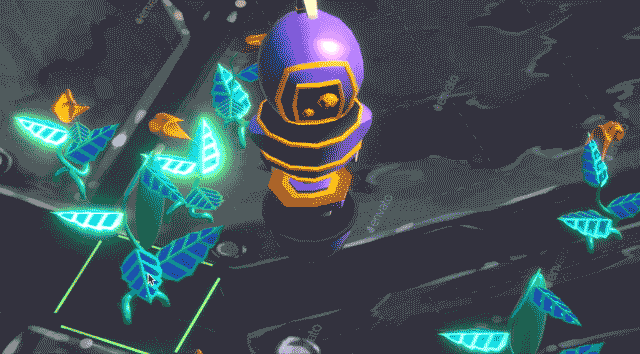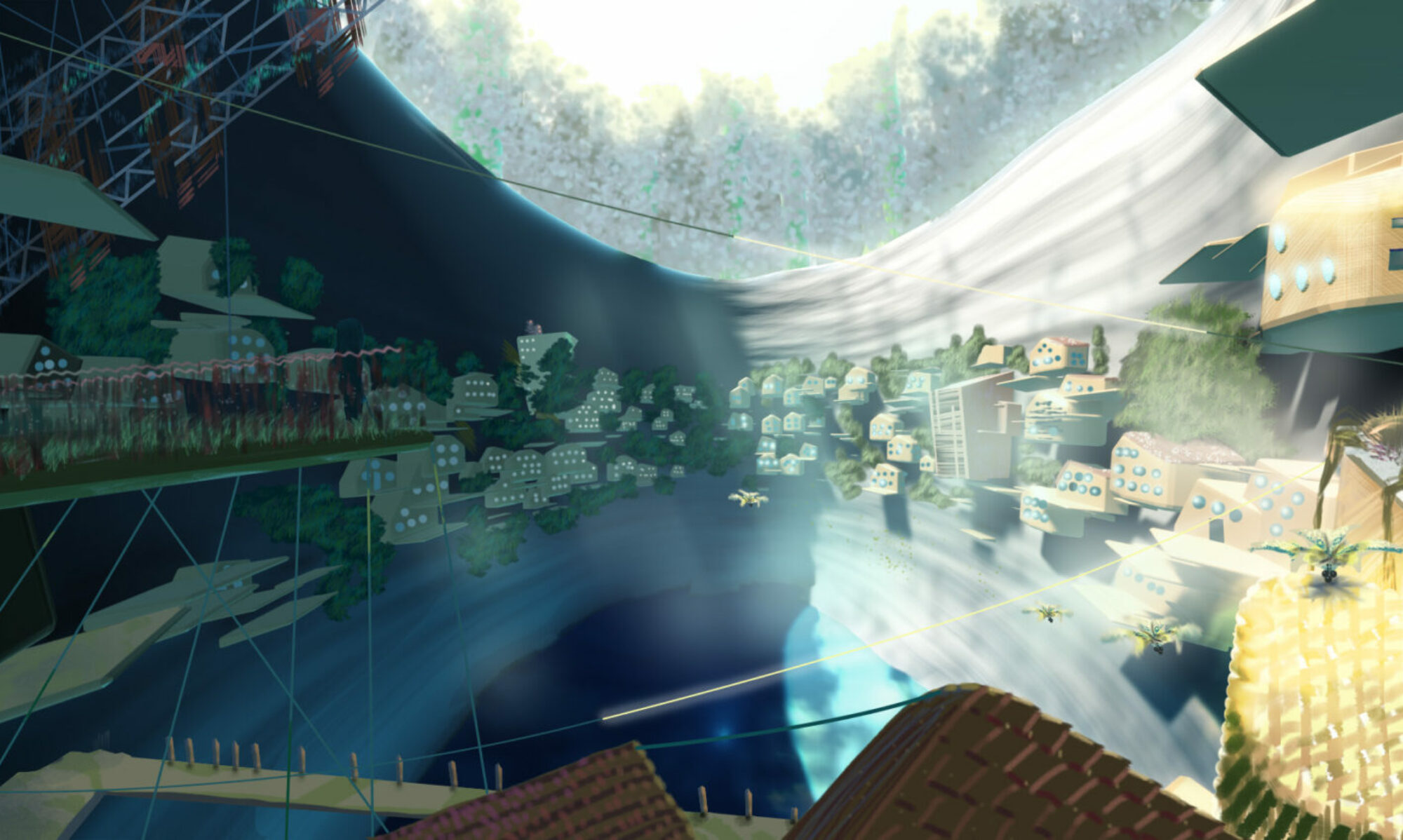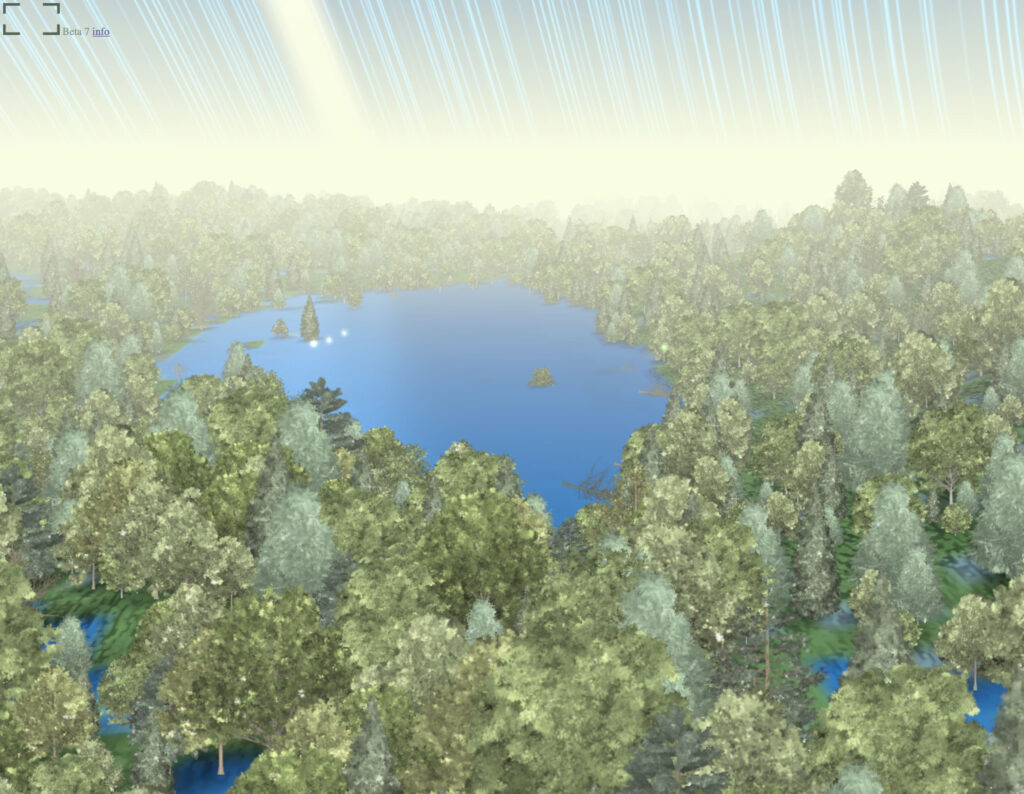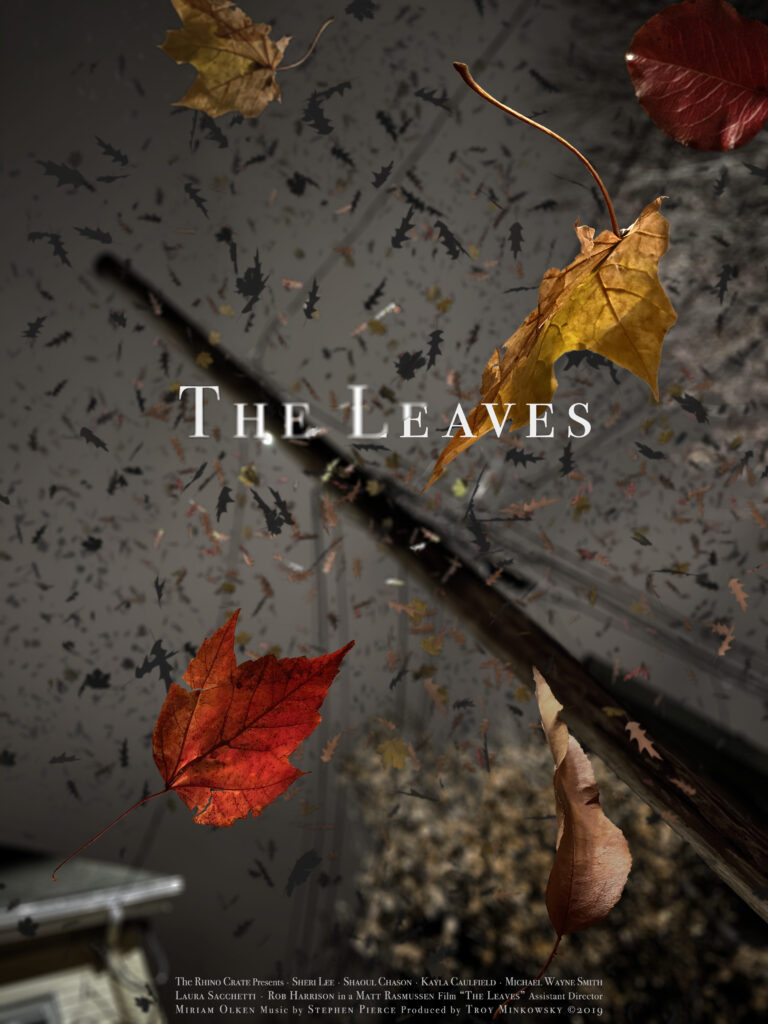I took programming dangers in the game as an opportunity to take a breather from coding and realize some art assets.


Cinematic/tech artist & filmmaker. Online since 1999.
Since I was mostly the programmer, I’d like to look at some of the systems that make the game engine work. But first…
For me, what made this game possible was an email exchange with Michael Schmidt at Unity, in which he cleared up something critical. Since Unity regards every script as a different C# type, how can you subclass a script into different variations? More specifically, how can one script interact with another when it doesn’t know if it’s the class, one of the subclasses, or one of the subclass’s subclasses?
The key is that Unity will treat a subclass script as if it were any class up its chain of inheritance. When I subclass ActualThing into Upgrade, and Upgrade into Sensor, other scripts can reference a Sensor script as if it were an Upgrade script or an ActualThing script. So these lines are equivalent:
float currentMass = someGameObject.GetComponent<ActualThing>().mass;
float currentMass = someGameObject.GetComponent<Upgrade>().mass;
float currentMass = someGameObject.GetComponent<Sensor>().mass;A Sensor script can then override, for instance, ActualThing’s takeDamage() function, and respond to it differently than, say, a rock would:
//in ActualThing:
public virtual void takeDamage(float damageAmount){
//reduce hp//in Sensor:
public override void takeDamage(float damageAmount){
//reduce hp
//reduce sight distanceThis is how basic object inheritence patterns can be implemented in Unity.
The Grid: The first programming challenge was an infinite, non-repeating grid. Based on my previous thinking on large pseudorandom world generation, I worked out a system that places BigTiles (containing a 10×10 grid of normal game Tiles and other content on top of them) from a list of available BigTiles. A given x and y will always generate the same BigTile, allowing the game to dispose of BigTiles it no longer needs, but generate them again if needed. Each game picks a random x and y offset to the starting position–a pair of C# ints of value -2 billion to 2 billion. The x and y offsets are summed and used as another pseudorandom seed to further shuffle things around atop the BigTile. The list of available BigTiles changes based on the distance from the game’s starting point, allowing the game to gate more powerful and challenging content. Specific BigTiles can also be forced to appear, like the starting location.
Pathfinding: The bots use an A* pathfinding system. Niek worked out the initial code, and I adapted it to allow planning without executing the route (for AI reasoning) and to talk to the existing grid-based systems. This required a deep dive into Amit Patel’s A* Pages, a deep summation of pathfinding systems, which I highly recommend.
AI: The bots not being driven by the player have competing desires, to which they assign weights based on need and availability of a solution. The highest weight wins. They may reevaluate their options several times on the way to their goal, but the current “plan” has a sunk-cost-fallacy bonus attached, to reduce indecisiveness. The AI can query the Pathfinder (a separate script) for the “cost” of a path; it will also store the steps needed for pathfinding, to avoid a processing-heavy path recalculation for the action it ultimately decides to take.
Mystery Boxes: Remember how every BigTile has its own pseudorandom seed number? MysteryBoxes are a system that uses these to “randomly” shuffle things around on BigTiles when they’re generated–plants, upgrades, whatever you’d like. The plant growing on top of a toppled monument? That’s not scripted. One limitation is that if something on a BigTile gets destroyed, it’ll reappear if the player ever goes far enough away and comes back. A special subclass, the CPUBox, will generate a new CPU (the base of a new bot) if your party is smaller than the allowed size, or a random Upgrade if not. Like other gated content, the maximum number of party members increases with distance from your starting point.

“Tiny Convoy” is as a demo-length convoy simulator–a moving base builder–developed in Unity 2019 by Niek Meffert, Lucas Oliveira and myself. Playable betas for Mac and Windows can be downloaded here. The goal is to survive as a group of tiny robots in a big dangerous world: find power, upgrade your bots, and avoid dangers.
Remember the annoying escort missions in “Warcraft III,” where your soldiers kept hauling off to attack anything that moved, instead of protecting the things they were supposed to? It’s like that. Except your bots can’t attack anything. You are essentially robot herbivores. Looked at another way, “Tiny Convoy” is a herd simulator.
As a small team in our first year Masters, the work was loosly siloed. Oliveira took the lead on modelling and texturing, Meffert was point on UI and the first version of the A* pathfinder, and the C# code base is about 90% mine. (I also designed the Touch-Me-Not exploding plant.)
1. Emergent visual storytelling–
Design Pilarsno dialogue, no scripted beats
2. Keep moving & exploring
3. No weapons
4. Cooperation is essential to survive & thrive
Our goal was to marry emergence and progression in an interesting and satisfying way. We wanted to build a game in which the player could create in their own mind an emergent storyline around an algorithmically-generated world. If the content one encountered became too boring and undifferentiated, there would be no sense of progression, and little incentive to keep exploring. On the other hand, if too many things were deliberately laid in the player’s path at defined points, it would take on the feeling of an “on rails” story game, to the detriment of replayability.
Every “Civilization” player remembers when the Mongols took their capital, and they rallied back to win. What happened was only the randomized game content interacting with the rules and the player’s choices, but it took on the quality of a narrative moment because it was different and valued by the player. Likewise, we wished to create moments like “When Little Blue got stepped on,” and “When we found the field of Touch-Me-Nots on the other side of the desert”—moments created entirely by the game systems interacting with the player’s choices, but which would feel personally meaningful.
To do this, we needed to construct a series of game loops, with systems of player feedback. We would gradually challenge the player by introducing limits on stock (not enough power available) and new sinks (dangers that damage parts). The game engine would introduce new content and changes to the starting conditions in a measured manner as the player moved farther and farther across the game world.
The old, dark Christmas. Rich and folkloric. Mood album for holiday season 2020. $10 on iTunes, BandCamp or Amazon.
Ugh. I wasn’t going to buy this smart mega-expansion. But then I did. At this point productivity is purely a memory.
An html5 auto-conversation game about the different versions of ourselves that have been, are, and will be, meeting an ex from many years prior. Graphics designed/performed with iOS Messages animojis. Created for the October 2020- game jam at KADK. (Plus fixes, cleanup, and the addition of a third character.)
Introducing beta 7 of Forest, with better graphics, a more dynamic game world, and many behind the scenes tweaks. This project is released under an MIT License.

Forest Gods. Nearly all aspects of the board can now be influenced by randomly-generated, free-floating roamers. Some are dramatic (like lightning gods) others practically invisible (like soil porosity gods). They’re intended to make the forest more varied, and perhaps even less lonely and more mysterious.
Improved Fire. Fire has been an aspect of the game world for several versions, but is completely rewritten in beta 7 to be much more graphical, dramatic, realistic in its effect on the forest, and unpredictable.
Better Graphics. The band of the sun now moves throughout the year more accurately, and the stars now properly blur into rings as well. Fog is a custom shader, the minimum of height fog and linear distance fog. Lighting for the ground and water now comes from an array of lights aligned with the sun ring. (Trees are still sprites, however, and don’t yet respond to lighting.) The randomly generated forest’s average temperature is used as a stand-in for latitude.
Smaller Board. Moved from a 200×200 tile grid down to 128×128. This seems to tax the CPU a little less without noticeably changing the scale of the game.
Erosion. Soil is now washed along by water. Stream system formation is still rare, but it does happen.
I miss productivity, I hate the unskippable logos, I’m not a big fan of Steam, and it runs my laptop red hot, but wow is this game something.
Introducing beta 6 of Forest. This release should bring a much higher framerate in all browsers, and a number of small fixes.

I’ve tried to organize Forest into a series of big JavaScript Objects that group related activities, and Classes to cleanly manage everything I need more than one of. Please take a look at the game loop and WebWorker code if you’re interested in how any of it works. This project is released under an MIT License.
Better performance in all browsers. Beta 6 moves the process of updating water flow and ground conditions into a WebWorker, a second processor thread. Beta 5 was a major rewrite to accomodate this, moving most of the data of each GridTile object into a single, large Float32Array, and adding Getters/Setters to the GridTile class to make the array data behave like normal properties. Parts of the array can then be rapidly copied, to update the vertex data or to be sent to the worker thread, via the .subarray() function. Data returned from the worker thread can then be copied back into the main array via a .set() operation. Currently, any changes made to the board by Actors or Roamers during thread execution will be overwritten
Better performance in Firefox and Chrome. The GridTile prototype uses Getters/Setters to manipulate the data in the master Float32Array. This was originally done in Beta 5 to allow moving some updating to a WebWorker, but for whatever reason the major speedup of moving the data into the Float32Array alone ended up being worth the change. The index lookups in the Getters/Setters (e.g. ground.data[ground.indices.watertable+this.index]) bring virtually no overhead in Safari, but Chrome and Firefox struggled with them. Beta 6 caches the lookup indices in each object, which speeds up Firefox and Chrome considerably even absent the WebWorker thread.
“Forest” is a peaceful, meditative god game. It is free, runs in any modern browser, and is played with one button (or finger). Each time the page is loaded, a forest with a random climate is created. You may interact, observe, or any combination of the two. There is no objective.
The game is written in JavaScript, using WebGL via the Babylon.js framework. Beta 5 is a preview release for which I’m grateful for feedback– a major rewrite, much faster and more memory-efficient than previous betas, with most of the major systems in place for the game as I’d originally conceived it. If you’re interested, please take a look at the source code.
Copyright (c) 2020 Matt Rasmussen
Permission is hereby granted, free of charge, to any person obtaining a copy of this software and associated documentation files (the “Software”), to deal in the Software without restriction, including without limitation the rights to use, copy, modify, merge, publish, distribute, sublicense, and/or sell copies of the Software, and to permit persons to whom the Software is furnished to do so, subject to the following conditions:
The above copyright notice and this permission notice shall be included in all copies or substantial portions of the Software.
THE SOFTWARE IS PROVIDED “AS IS”, WITHOUT WARRANTY OF ANY KIND, EXPRESS OR IMPLIED, INCLUDING BUT NOT LIMITED TO THE WARRANTIES OF MERCHANTABILITY, FITNESS FOR A PARTICULAR PURPOSE AND NONINFRINGEMENT. IN NO EVENT SHALL THE AUTHORS OR COPYRIGHT HOLDERS BE LIABLE FOR ANY CLAIM, DAMAGES OR OTHER LIABILITY, WHETHER IN AN ACTION OF CONTRACT, TORT OR OTHERWISE, ARISING FROM, OUT OF OR IN CONNECTION WITH THE SOFTWARE OR THE USE OR OTHER DEALINGS IN THE SOFTWARE.
Forest Fire is a simple Pandemic-like (or Pandemic-lite) game for 2-4 kids, age 5 and up. The players work together to put out the fires in a forest. Encourage them to talk over their moves, and strategize as a team.
Make a 6×6 grid. Number the rows and columns 1-6. These are the Forest Squares. Place a player piece for each kid around the outer edge of the grid, next to any square they choose.
Get 2 dice. These are the Fire Dice, which you will roll to add Fires (counters) to the board–one roll of the dice per player per round. Announce the rolls to the players as down then across (e.g. “1 down, 4 across.”) Have the players add a Fire counter to the square you call out. Squares can have more than one Fire counter at a time. Now explain that when there’s a non-burning (empty) square between a new Fire and an existing Fire, the Fire spreads to the square inbetween–horizontally, vertically, or diagonally. (This is like Go, only Fire can only “flip” a single empty square.) Roll once for each player, then begin.
If at the end of a round anyone is still on a square with a Fire, they’re out of the game. Disaster! If all forest squares are burning, it’s game over. When the kids put out all the Fires, they win!
Difficulty: A Firebreak is a clearing (natural or artificial) in the forest that fire can’t easily cross. With a second type of counter, you may at the beginning of the game roll to add Firebreaks to the board. Players can move onto Firebreak squares, but if a Fire is rolled on a Firebreak square, nothing happens. For an easier game, roll up to one Firebreak per player. Roll fewer or none for a challenge game. (Remember, the players still lose if every non-Firebreak square is ablaze at the same time!)
Introduce the types of player characters one game at a time:
Have the kids mime holding a firehose. Explain that a Hotshot Team is the firefighters on the ground with hoses and shovels who work to put out forest fires. (This is where the term comes from!)
A Hotshot gets 2 moves per round. Each move can be either: 1) Putting out the Fires (removing all Fire counters) from their own or an adjacent square (N, S, E, W or diagonally), or 2) Moving 1 square N, S, E or W. Moving one square off the board, like at the beginning, is allowed.
To begin the game, explain that it takes time to get Hotshot Teams to a forest fire. Because of this, the fire has time to spread. Add 2 rounds’ worth of fires to the board (one roll for each player x2) then have the players begin.
Have the kids mime holding onto the straps of a parachute. Explain that a Fire Jumper parachutes into the forest near a fire. Because of this, they can’t carry as much equipment, but once they hike out they can jump in again anywhere they’re needed.
A Smoke Jumper gets 2 moves per round. Similar to the Hotshot, each move can be either: 1) Putting out 1 fire (removing only 1 counter) from their own or an adjacent square (N, S, E, W or diagonally), or 2) Moving 1 square N, S, E or W. They also have a special ability: Upon moving off the board, they can “jump” to any square on the board. (Moving off the board and jumping count as a single action.)
Add 2 rounds’ worth of Fires to the board, then have the players begin.
Have the kids make an airplane with they hand (palm flat, index and ring finger together underneath the middle finger, pinky and thumb straight out to the sides). (If this is too hard, just pretend to be holding the flying yoke.) Explain that Pilots fly seaplanes which land on a body of water, fill a large tank, and then dump the water directly onto a fire.
Movement-wise, the pilot works a little differently. Every other turn, they must leave the board to refill their water tanks. Thus, every second turn, the players pick up their piece and hold it in their hand. The next turn, however, they can put out all the fire on any 3 squares in a row (N, S, E, W or diagonally).
Add 2 rounds’ worth of fires to the board. When the kids begin, remind them that they must first leave the board to fill up–so there will actually be 3 rounds of Fires added before they can begin putting them out!
Now we put the pieces together. Let the kids decide (and encourage them to discuss strategically) what each would like to be: a Hotshot, a Smoke Jumper, or a Pilot. Explain how fighting forest fires is a team effort, with people in different specialties doing different jobs. (Now we understand the pantomiming; it’s to keep everyone’s role straight!)
Add 2 rounds’ worth of fires to the board, and have the kids begin!

If you’re in the Boston area Sunday, February 8, be sure to catch the world premier at the Boston Sci-Fi Film Festival.